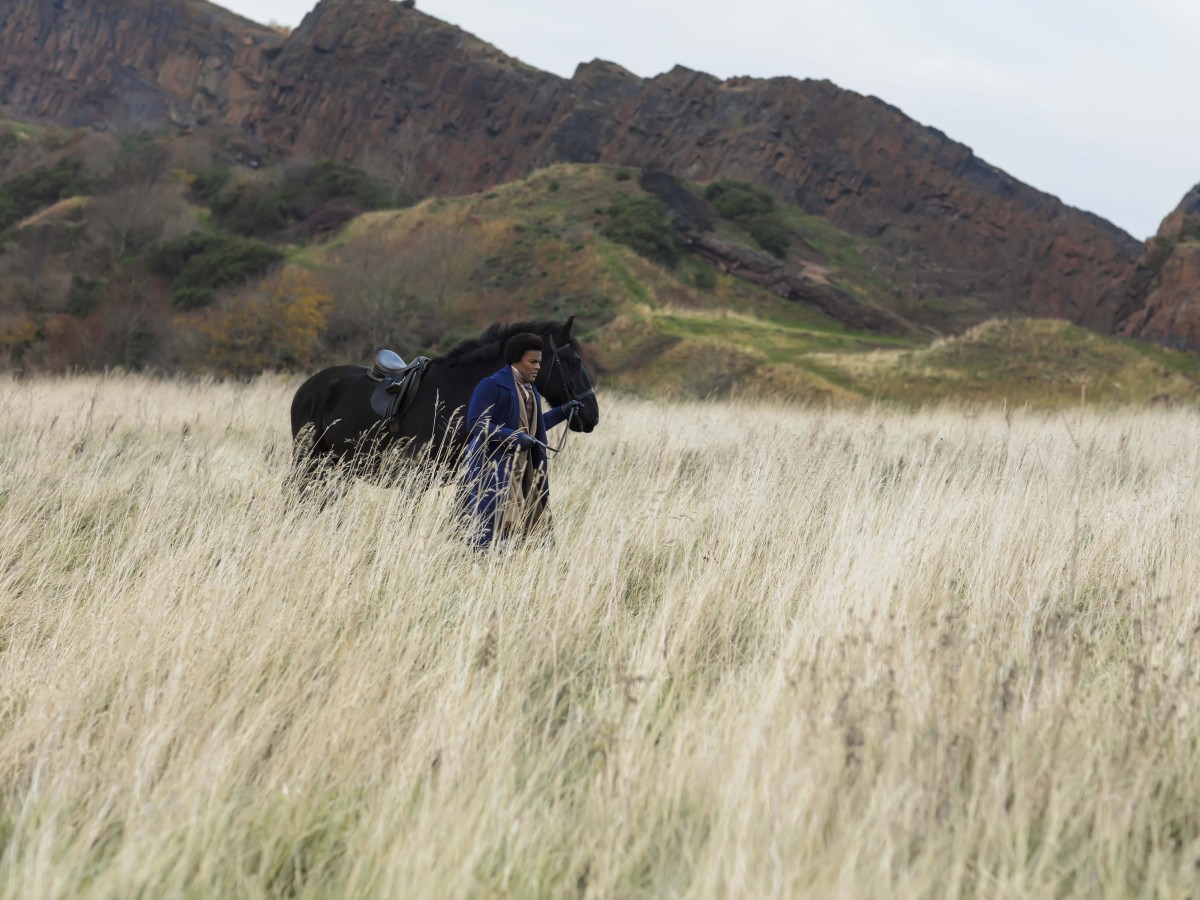Lessons of the Hour at Metro Pictures New York
Isaac Julien's visionary ten-screen film installation Lessons of the Hour explores the incomparable achievements of America's foremost abolitionist figure. Frederick Douglass gained celebrity on the abolitionist circuit as an extraordinary orator, becoming the most photographed American of the 19th century. Julien's project is informed by some of Douglass's most important speeches, such as "Lessons of the Hour," "What to the Slave Is the 4th of July?," and "Lecture on Pictures," the latter being a text that connects picture-making and photography to his vision of how technology could influence human relations. Julien's immersive work gives expression to the zeitgeist of Douglass's era, his legacy, and the ways in which his story may be viewed through a contemporary lens.
Created in consultation with Douglass scholar Celeste-Marie Bernier of the University of Edinburgh, Julien's film imagines the person of Frederick Douglass through a series of tableaux vivants and gives life to his relationships with other cultural icons of the time. Mostly women, these characters were chosen for being representatives of ideals of equality and include African-American photographer J.P. Ball; Douglass's wives Anna Murray and Helen Pitts; Anna and Ellen Richardson, the English Quakers who allowed Douglass to return to the United States as a free man; Susan B. Anthony, the suffragist and Douglass's longtime friend; and Ottilie Assing, German intellectual, activist, and Douglass's lover.
Employing both 35mm film and the latest 4K digital technology, the film was shot in Washington, D.C., where Douglass lived late in life and where in 1894 he gave his final speech, "Lessons of the Hour," which addressed the shocking phenomenon of lynching in the post-Civil War American South. Additional filming took place in Scotland and England, where Douglass delivered over four hundred anti-slavery speeches--several of which Julien had reenacted inside the period rooms of the Royal Academy of Arts in London.
The exhibition will include a series of original tintype portraits titled Lyrics of Sunshine and Shadow; a selection of color photographs from Lessons of the Hour; a number of found archival images that appear in the film; and an assemblage of black and white analog photographs related to Julien's film Who Killed Colin Roach? (1983). Reflecting upon the death of Colin Roach, a 23-year-old black man who was shot dead at a police station in London's East End, this early work meditates on the continued quest for equality that was Douglass's life-long ambition, while also evoking the current Black Lives Matter movement.
An original score for the film was created by composer Paul Gladstone Reid. This is Julien's first work made in the United States since Baltimore (2003). Lessons of the Hour was commissioned and acquired by the Memorial Art Gallery in Rochester, New York, where it will be on view from March 3 through May 12, 2019.
Isaac Julien lives and works in London and Santa Cruz, California. He has had one-person exhibitions at the Museum of Modern Art, New York; Museo Universitario Arte Contemporáneo, Mexico City; Centre Pompidou, Paris; Moderna Museet, Stockholm; Museum of Contemporary Art, San Diego; Institute of Contemporary Art, Boston; Art Institute of Chicago; Milwaukee Art Museum; Bass Museum of Art, Miami; Saint Louis Art Museum; Kestnergesellschaft, Hannover; SESC Pompeia, São Paulo; and Aspen Art Museum. His acclaimed film installation Ten Thousand Waves has been exhibited in Shanghai, Sydney, Madrid, Helsinki, São Paolo, Gwangju, Gothenburg, Moscow, New York, Miami, and London. Julien has participated in the 2004 Whitney Biennial; the 8th Shanghai Biennale; 2012's La Triennale at Palais de Tokyo, Paris; and the 56th Venice Biennale. His films have been included in renowned film festivals such as the Cannes Film Festival, Berlin International Film Festival, and Venice Film Festival. Most recently Julien received the Charles Wollaston Award (2017) for most distinguished work at the Royal Academy Summer Exhibition, and in 2018 he was made a Royal Academician. He was awarded the title Commander of the Most Excellent Order of the British Empire (CBE) in the Queen's Birthday Honors, 2017.
Julien is Professor of Digital Arts at the University of California, Santa Cruz, where he and Professor Mark Nash are establishing the Isaac Julien Studio Lab. The newly conserved director's cut of Julien and Nash's film Frantz Fanon: Black Skin White Mask (1996) has just been released by Film Movement Distributors, New York.
For press inquiries, please contact Christine McMonagle at christine@metropictures.com.
Metro Pictures
519 West 24th Street
New York, NY 10011



